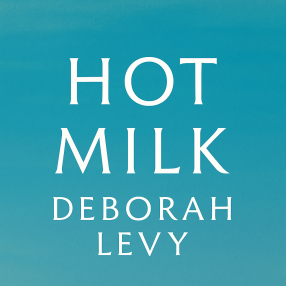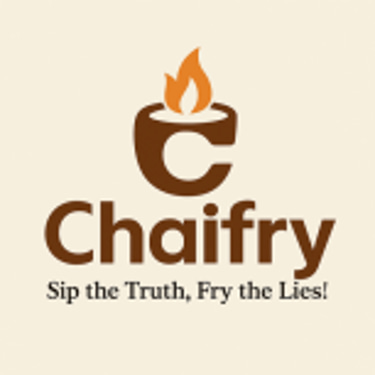Hot Milk by Deborah Levy
BOOKS REVIEW
Chaifry
7/12/20258 min read


Deborah Levy’s Hot Milk (2016), published by Hamish Hamilton, is a hypnotic novel shortlisted for the 2016 Man Booker Prize, following her acclaimed Swimming Home (2011). Set against the sun-scorched, jellyfish-laden coast of Almería, Spain, this vivid narrative explores the fraught relationship between Sofia Papastergiadis, a 25-year-old anthropologist-turned-barista, and her hypochondriac mother, Rose, as they seek a cure for Rose’s mysterious paralysis at the enigmatic Gómez Clinic. Described as “a powerful novel of the interior life, which Levy creates with a vividness that recalls Virginia Woolf” (The Independent, 2016), Hot Milk delves into themes of identity, female sexuality, familial duty, and the psychological weight of caregiving, set amidst economic austerity and personal turmoil. Levy, a British author of South African origin, is celebrated for her poetic prose and incisive exploration of gender and displacement, as seen in her essays like Things I Don’t Want to Know (2013).
This review argues that Hot Milk is essential reading for its lyrical intensity, feminist reimagining of the Medusa myth, and profound exploration of self-discovery, offering Indian readers a lens to reflect on gendered expectations, familial obligations, and the quest for autonomy in a patriarchal society.
Hot Milk follows Sofia Papastergiadis and her mother, Rose, who travel from England to Almería, Spain, to seek treatment at the Gómez Clinic for Rose’s intermittent, possibly psychosomatic paralysis: “My mother’s legs were a conundrum, sometimes working, sometimes not” (Levy, 2016, p. 12). Sofia, who has abandoned her anthropology PhD and works as a barista, is tethered to her mother’s needs, having remortgaged their London home to fund the clinic: “My laptop has all my life in it, and now it is broken, so am I” (Levy, 2016, p. 3). The novel opens with Sofia dropping her laptop, a metaphor for her fractured sense of self: “Time has shattered, it’s cracking like my lips” (Levy, 2016, p. 44). In Almería, the oppressive heat and jellyfish-infested sea—“The medusas, slow and calm like spaceships, delicate and dangerous” (Levy, 2016, p. 28)—mirror Sofia’s internal disarray.
Rose, in her sixties, is a demanding figure, her ailments dominating their lives: “My love for my mother is like an axe. It cuts very deep” (Levy, 2016, p. 67). The clinic, run by the charismatic but dubious Dr. Gómez—“He is either a quack or a maverick, I’m not sure which” (Levy, 2016, p. 35)—and his daughter, Nurse Sunshine, offers unorthodox treatments, prompting Sofia to question her mother’s illness: “Is her sickness a way to keep me close, to make me her servant?” (Levy, 2016, p. 89). Sofia’s anthropological lens shapes her observations, as she muses on a broken Greek vase, a relic of her estranged father: “The shards were the ruins that were once a whole civilisation” (Levy, 2016, p. 53).
Seeking escape, Sofia embarks on two passionate affairs: one with Juan, a local who treats her jellyfish stings—“His fingertips were on the stings… it was agony but he was touching me very lightly” (Levy, 2016, p. 29)—and another with Ingrid, a German seamstress whose intensity captivates her: “Ingrid is a storm, and I am caught in her currents” (Levy, 2016, p. 102). These relationships awaken Sofia’s suppressed desires, challenging her role as caregiver. A trip to Athens to confront her Greek father, Christos, who abandoned her, reveals his new family and a city in economic collapse: “Athens is falling apart, and so am I” (Levy, 2016, p. 145). The novel’s open ending, with Sofia and Rose leaving the clinic without a clear diagnosis, underscores the unresolved tension of their bond: “I am flesh thirst desire dust blood lips cracking feet blistered knees skinned hips bruised, but I am so happy not to be napping on a sofa under a blanket with an older man by my side and a baby on my lap” (Levy, 2016, p. 187).
Hot Milk is a triumph of lyrical prose and psychological depth, its “exquisite prose… perfectly crafted, a dream-narrative so mesmerising that reading it is to be under a spell” (The Independent, 2016). Levy’s vivid imagery, such as the jellyfish—“The medusas, slow and calm like spaceships, delicate and dangerous” (Levy, 2016, p. 28)—evokes the Medusa myth, reimagined through a feminist lens inspired by Hélène Cixous’s The Laugh of the Medusa: “You only have to look at the Medusa straight on to see her. And she’s not deadly. She’s beautiful and she’s laughing” (Cixous, 1976, as cited in The Guardian, 2016). Sofia’s anthropological perspective—“I am living a vague, temporary life in the equivalent of a shed on the fringe of a village” (Levy, 2016, p. 78)—offers a sharp critique of identity and displacement, resonating with readers who appreciate introspective narratives like Virginia Woolf’s Mrs. Dalloway.
The novel’s exploration of the mother-daughter dynamic is its core strength: “My love for my mother is like an axe. It cuts very deep” (Levy, 2016, p. 67) captures the ambivalence of filial duty, a universal theme rendered with raw intensity. Sofia’s affairs with Juan and Ingrid—“Ingrid is a storm, and I am caught in her currents” (Levy, 2016, p. 102)—mark her sexual awakening, challenging traditional notions of femininity and caregiving. The Spanish setting, with its “blazing sun, burning sand, and harsh salt” (Topaz Literary, 2021), mirrors Sofia’s emotional turmoil, creating a claustrophobic atmosphere that amplifies the narrative’s tension. Levy’s sparse yet poetic style—“Time has shattered, it’s cracking like my lips” (Levy, 2016, p. 44)—weaves symbols like the broken vase and medusas into a rich tapestry, making the novel a compelling study of self-discovery.
Despite its strengths, Hot Milk has notable flaws. The narrative’s fluidity, while evocative, can feel disjointed: “Hot Milk does not feel like a conceived, structured, and executed novel” (Medium, 2020). Sofia’s sudden trip to Athens—“Athens is falling apart, and so am I” (Levy, 2016, p. 145)—lacks sufficient buildup, leaving readers puzzled about her motivations, as noted: “There is not much of an explanation as to the process of how she decides to get on that plane” (The Book Binder’s Daughter, 2016). The novel’s heavy reliance on symbolism, such as the medusas and the broken vase—“The shards were the ruins that were once a whole civilization” (Levy, 2016, p. 53)—can overwhelm, with some critics arguing it “has too much symbolism” (Amazon, 2016).
Sofia’s character, while compelling, may alienate some readers: “She was such a weird, distant character that never felt real” (Amazon, 2016). Her passivity and detachment—“I am overflowing like coffee leaking from a paper cup. I wonder, shall I make myself smaller?” (Levy, 2016, p. 95)—can frustrate those seeking a more proactive protagonist. The title Hot Milk, despite references to “warm milk” as breast milk, feels disconnected from the narrative, as one reviewer notes: “I didn’t find a single mention of hot milk” (Goodreads, 2015). For Indian readers, the novel’s European and Greek settings may feel distant compared to local narratives, and its explicit exploration of sexuality may challenge conservative sensibilities in some communities.
Why Indian Readers Must Read This Book
Hot Milk is a vital read for Indian readers because its exploration of gendered expectations, familial duty, and the struggle for self-discovery resonates deeply with India’s socio-cultural landscape, where women often navigate patriarchal constraints and caregiving roles. Its feminist reimagining of the Medusa myth and lyrical introspection offer a universal yet poignant lens for Indian readers to confront systemic inequities and embrace personal agency.
Sofia’s yearning for autonomy—“I am living a vague, temporary life in the equivalent of a shed on the fringe of a village” (Levy, 2016, p. 78)—mirrors the aspirations of Indian women in urban centers like Delhi or rural areas like Rajasthan, where societal pressures often prioritize family over individual desires. Her question, “What has stopped me from building a two-story house in the center of the village?” (Levy, 2016, p. 78), speaks to the challenges faced by women in India who seek to carve out independent identities amidst expectations of marriage or caregiving, as seen in narratives of women in self-help groups in Gujarat or feminist collectives in Hyderabad. Sofia’s caregiving role—“Is her sickness a way to keep me close, to make me her servant?” (Levy, 2016, p. 89)—resonates with Indian daughters who often bear the burden of familial obligations, particularly in multigenerational households, encouraging reflection on balancing duty and selfhood.
The novel’s feminist reimagining of the Medusa myth challenges patriarchal fears of women’s erotic and creative power, offering Indian readers a bold narrative to confront taboos around female desire. Sofia’s affairs with Juan—“His fingertips were on the stings… it was agony but he was touching me very lightly” (Levy, 2016, p. 29)—and Ingrid—“Ingrid is a storm, and I am caught in her currents” (Levy, 2016, p. 102)—celebrate female sexuality, inspiring women in progressive hubs like Mumbai or Chennai to embrace their desires despite societal constraints. This encourages Indian readers to challenge restrictive norms around women’s roles, from traditional expectations in rural Uttar Pradesh to modern pressures in corporate Bengaluru.
The mother-daughter dynamic—“My love for my mother is like an axe. It cuts very deep” (Levy, 2016, p. 67)—captures the ambivalence of filial bonds, a universal theme for Indian readers who value intergenerational ties. In communities from Kolkata to Kerala, where daughters often navigate complex maternal expectations, Sofia’s struggle to break free from Rose’s control mirrors the tension between tradition and individuality, as seen in narratives of women resisting arranged marriages. The novel’s exploration of psychosomatic illness—“My mother’s legs were a conundrum, sometimes working, sometimes not” (Levy, 2016, p. 12)—offers a lens to examine how societal pressures, such as those faced by women in patriarchal Indian families, can manifest as physical or psychological ailments, encouraging readers to question internalized norms.
The Spanish setting, with its “medusas, slow and calm like spaceships, delicate and dangerous” (Levy, 2016, p. 28), evokes a universal sense of alienation that resonates with Indian readers navigating rapid urbanization or cultural displacement in cities like Bhopal. Sofia’s anthropological lens—“The shards were the ruins that were once a whole civilization” (Levy, 2016, p. 53)—parallels India’s grappling with colonial legacies and global influences, urging readers to reclaim their cultural narratives, as seen in festivals like Navratri, which celebrate resilience. Her defiance—“I am flesh thirst desire dust blood lips cracking feet blistered knees skinned hips bruised, but I am so happy not to be napping on a sofa under a blanket with an older man by my side and a baby on my lap” (Levy, 2016, p. 187)—inspires Indian women, from marginalized communities in Tamil Nadu to urban professionals in Delhi, to reject traditional roles and embrace unconventional paths.
The novel’s exploration of economic austerity—“Athens is falling apart, and so am I” (Levy, 2016, p. 145)—connects with Indian readers facing economic challenges, from informal workers in Varanasi to professionals in Hyderabad, highlighting resilience in adversity. Its open-ended conclusion, leaving Sofia’s future uncertain, mirrors the ongoing struggles of Indian women seeking autonomy, encouraging readers to embrace ambiguity as a space for growth. At 218 pages, Hot Milk is accessible for busy readers, from students in Bhopal to professionals in Bengaluru, while its global perspective, as noted for Swimming Home (The Guardian, 2016), broadens Indian readers’ understanding of shared human struggles. Its poetic intensity and feminist critique make it a vital text for Indian readers seeking narratives of resistance, urging them to confront societal barriers and celebrate their potential.
Hot Milk by Deborah Levy is a mesmerizing, if occasionally elusive, novel that earns its 2016 Man Booker shortlist status. Its poetic prose—“Time has shattered, it’s cracking like my lips” (Levy, 2016, p. 44)—and feminist reimagining of the Medusa myth make it a standout exploration of identity and autonomy. Despite a fragmented narrative and a sometimes distant protagonist, its vivid imagery and psychological depth captivate. For Indian readers, its resonance with gendered struggles and familial dynamics makes it essential, inspiring reflection on agency and resilience. Highly recommended, Hot Milk is a transformative call to confront systemic inequities and embrace self-discovery.
